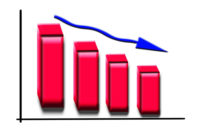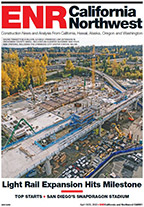New construction starts in April settled back 1% to a seasonally adjusted annual rate of $473.0 billion, according to McGraw-Hill Construction, a division of McGraw-Hill Financial. The public-works sector retreated from its elevated pace in March, and housing experienced a slight loss of momentum. Meanwhile, nonresidential building in April showed some improvement after its lackluster performance during the previous two months.
On an unadjusted basis, total construction starts in the January-April period of 2013 came in at $141.1 billion, down 5% from the same period a year ago. The 2013 year-to-date amount for total construction was pulled down by a sharply reduced volume of new electric utility starts. If electric utilities are excluded, total construction starts would be up 12% year-to-date, with most of the lift coming from this year’s stronger rate of homebuilding.
The April statistics produced a reading of 100 for the Dodge Index (2000=100), compared to the 101 that was reported for March. For all of 2012, the Dodge Index averaged 100.
“Total construction starts during the early months of 2013 have been able to stay close to last year’s average pace, but the moderate upward trend that was present last year has yet to resume,” said Robert A. Murray, vice president of economic affairs for McGraw Hill Construction.
“The housing market for the most part has maintained its recent strength, even with a slight pause in April, but new electric utility starts have slowed significantly from last year’s record volume. The boost that had been expected to come in 2013 from nonresidential building is at best only beginning to take hold, as the pickup in April followed weak activity in February and March. One relative bright spot so far in 2013 has been a stronger-than-expected amount of public works construction, although its April downturn may well be a sign of diminished activity to come.”
Nonbuilding Construction
Nonbuilding construction in April dropped 7% to $130.8 billion (annual rate). The moderate decline followed substantial volatility during the previous two months, with nonbuilding construction soaring 46% in March after plunging 33% in February. The public works portion of nonbuilding construction decreased 15% in April after its heightened March activity, as declines were reported for most of the public works project types.
Highway and bridge construction in April retreated 25%, following a 31% jump in March. April’s rate of highway and bridge construction was down 13% from the average pace reported for 2012 as a whole, despite the April start of a $128-million highway project in New Jersey and a $108-million highway project in California.
The environmental public works categories weakened considerably in April, with river-harbor development down 13%, sewer systems down 31% and water supply systems down 35%. Miscellaneous public works, which is comprised of such diverse project types as mass transit and pipelines, was the only public-works category to register an April gain, rising 23%.
Lifting the miscellaneous public works category in April were three large rail-related projects—an $877-million segment of the RTD Eagle P3 Project in the Denver area, the $595-million BART South Bay Extension in San Jose, and the $30- million RTD I-225 Light Rail Line in Aurora, Colo. Electric utility construction in April increased 52% from a very weak March, although the April level of activity was still low by recent standards—down 47% from this category’s average monthly pace during 2012. Large electric utility projects that contributed to the April gain were a $740-million natural gas-fired powerplant in New Jersey, a $370-million wind farm in Kansas and a $270-million gas-fired powerplant in Colorado.
Residential Building
Residential building, at $198.0 billion (annual rate), eased back 1% in April. Single-family housing in April decreased 1%, and during the past two months, it has basically leveled off following the steady increases shown over the past year. The rate of activity for single-family housing in April was still elevated by recent standards—up 20% from its average monthly pace during 2012.
By region, reduced activity in April was registered by the South Atlantic and the West, each down 5%, which slightly outweighed gains in the South Central, up 1%; the Midwest, up 4%; and the Northeast, up 6%. Multifamily housing in April slipped 2% from the previous month, although like single-family housing, it was still elevated by recent standards—up 19% from its average monthly pace during 2012. Large projects that supported the multifamily total in April were the following—a $225-million apartment building in New York City, the $191-million apartment portion of a $240-million, mixed-use building in Jersey City, N.J., and a $170-million condominium tower in Honolulu.



Post a comment to this article
Report Abusive Comment